Photo
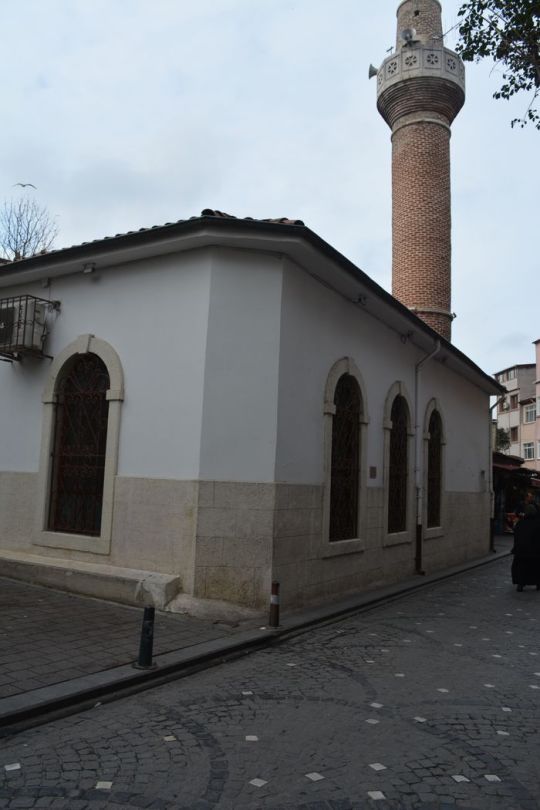
The Cistern of Bonus and Its Location
The conclusion regarding the course of the Constantinian Wall aligns with the information given by Zosimus and the Notitia. As mentioned earlier, these sources suggest that the wall passed close to this point. Now, let’s look at another important landmark: the Cistern of Bonus.
The Importance of the Cistern of Bonus
The Cistern of Bonus was built by the Patrician Bonus, a well-known figure in Byzantine history. He is most famous for his brave defense of Constantinople in 627. During that time, the Emperor Heraclius was away in Persia fighting the Persians and the Avars. Bonus’s efforts in protecting the city while the emperor was abroad earned him significant recognition.
Dispute Over the Cistern’s Location
There is a disagreement about where exactly the Cistern of Bonus was located. It is not easy to determine its exact position with the information we have today. Gyllius, a 16th-century traveler, believed that the cistern was a large one located on the Sixth Hill, near the Church of St. John in Petra. He described it as being 300 paces in length and robbed of its roof and columns, turned into a vegetable garden Private Sofia Tour.
However, Gyllius’s identification may not be entirely accurate. The Constantinian Wall never extended that far west, so his identification of the cistern in that location is questionable.
Dr. Mordtmann’s Theory
Dr. Mordtmann, a modern scholar, has a different theory regarding the location of the Cistern of Bonus. He suggests that it was the large open reservoir found to the south-west of the Mosque of Sultan Selim, on the Fifth Hill. This idea has strong support, and there are several reasons to believe that the Cistern of Bonus was located in this area.
In conclusion, the Cistern of Bonus plays an important role in the history of Constantinople and its defenses. Although there is still some uncertainty about its exact location, the two main theories—Gyllius’s theory and Dr. Mordtmann’s theory—offer valuable insights into the city’s infrastructure during the time of Constantine. Further studies and discoveries may eventually provide a clearer answer regarding its precise location.
0 notes
Photo
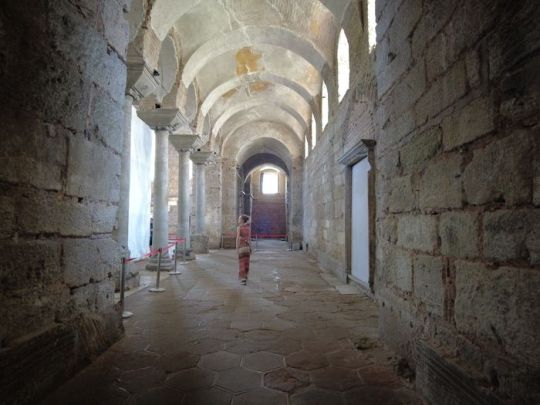
Light Hotel
Location: A-3, ul. Veslets 37 Contact: Tel: 917 90 90
Light Hotel is a modern and stylish hotel located on a quiet, cobbled street. It feels peaceful and far away from the busy center of Sofia. The public areas, like the lobby and lounge, have a clean and modern design. However, the rooms offer a cozy, slightly old-fashioned feeling, which some guests may find charming.
There are different bathroom styles in the rooms—some have shower cabins, while others feature large, comfortable bathtubs. This makes the hotel a good choice whether you prefer quick showers or relaxing baths.
Lion Hotel
Location: A-3, bul. Maria Luiza 60 Contact: Tel: 917 84 00
Lion Hotel is set in a beautiful nineteenth-century building. It stands at a busy road intersection, halfway between Sofia’s train station and city center. If you get a room facing the street, you can watch the lively flow of people and cars below Bulgaria Private Tour.
The hotel has many unique architectural features. Some rooms have bay windows, while others have arched windows, giving a special character you won’t find in many other hotels. The decoration varies a lot: some rooms have soft yellow colors, while others have bright striped wallpaper.
Lozenetz Hotel
Location: E-3, bul. Sveti Naum 23 Contact: Tel: 965 44 44
Lozenetz Hotel is a modern building located in a quiet residential area just south of Sofia’s center. The rooms are bright and spacious, although some bathrooms can feel a little small.
One special feature is a small garden next to the restaurant, which is a nice place to relax after a busy day.
Meg Lozenetz Hotel
Location: D-3, ul. Krum Popov 84 Contact: Tel: 965 19 70
Meg Lozenetz is a mid-sized hotel in a residential area near the City Center Sofia shopping mall. The rooms have warm colors and thick carpets, creating a cozy atmosphere. Many rooms are not perfect rectangles but have interesting, irregular shapes which add character.
The hotel restaurant is decorated like a tropical garden, with wooden floors, rattan chairs, and many plants. There is even a large green parrot living there!
Triada Hotel
Location: G-8, ul. Venera 5 Contact: Tel: 970 67 67
Triada Hotel is a relatively new building with large, bright rooms. The rooms are decorated in soft shades of blue, creating a calm and relaxing atmosphere.
On the top floor, there is a sky bar with fantastic views of Sofia and the surrounding mountains, perfect for relaxing or meeting friends.
Triada Hotel also has excellent facilities for business meetings and seminars, making it popular with business travelers.
0 notes
Photo

Destruction of Bulgarian Villages
The Carnegie Commission summarized the actions of the Greek Army with the following findings:
“Systematically and in cold blood, the Greeks burned one hundred and sixty Bulgarian villages and destroyed at least 16,000 Bulgarian homes.”
The Murder of the Vicar of the Bulgarian Archbishop
Another terrible act was the murder of the Vicar of the Bulgarian Archbishop of Salonica, Archimandrite Eulogius. He was known to be a highly educated man and a patriot with noble and elevated views. His death marked another tragic incident in the conflict Guided Turkey Tours .
The Greek Army’s actions were marked by brutality and destruction against Bulgarian civilians. The letters and reports from the Carnegie Commission provide strong evidence of systematic violence and the killing of non-combatants, including women, children, and prisoners. The destruction of Bulgarian villages and homes was widespread, and even religious figures were not spared from violence.
0 notes
Photo

The Impact of Solidarity in Poland on Eastern Europe
The Solidarity Union in Poland, formed in the autumn of 1980, became a significant source of inspiration for human rights movements throughout Eastern Europe. Its success led workers in other countries to follow suit. In Romania, Georgia, and the Soviet Baltic Republics, workers began to strike, pushing for more rights and better conditions. Even in Bulgaria, voices of discontent grew stronger, and subversive ideas began to emerge.
The Bulgarian Secret Service Response
In September 1980, the Bulgarian Secret Service (Directorate Six), tasked with monitoring political enemies, was assigned to prevent any organized anti-socialist activities linked to the Solidarity movement in Poland. Their job was to stop any influence from the Polish unions and counter-revolutionary ideas from spreading into Bulgaria. Directorate Six focused on the intelligentsia, young people, and anyone suspected of being opposed to the government Customized Tour Istanbul.
By the end of 1980, Directorate Six conducted operations targeting intellectuals, students, and those who were seen as a threat to the regime. They attempted to stop any movement that could lead to unrest, particularly from the Polish influence. This led to the imposition of strict censorship on books, newspapers, films, and all types of Polish propaganda materials that were seen as promoting ideas contrary to the communist system.
Concerns Over Polish Influence
In the summer of 1980, many Polish tourists visited Bulgaria’s Black Sea coast, which raised concerns within the State Security. The authorities were worried that these tourists could spread pro-democracy ideas and encourage the Bulgarian people to challenge the regime.
To counteract this, the Bulgarian press began to publish propaganda that misrepresented the situation in Poland. The goal was to create a false image of the Polish trade unions, portraying them as being influenced by Western powers. The official daily newspaper, Rabotnichesko Delo, published numerous articles from the Soviet newspapers Pravda and Izvestiya, which attacked the Solidarity movement and its supporters. These articles aimed to show that Poland’s internal problems were caused by foreign interference.
Growing Discontent in Bulgaria
On 14 October 1981, Todor Zhivkov, the leader of Bulgaria, submitted a memorandum to the Politburo expressing his concern that the Polish movement might inspire similar protests in Bulgaria. The State Security continued to monitor the growing discontent, especially among young people. Directorate Six noticed an increase in anonymous leaflets and small gatherings in private homes where people discussed the situation in Poland.
In particular, a group of young people in Bulgaria began to work on a “Declaration-80”, a document that expressed support for the Polish struggle for democracy. The authorities saw this as a threat to the regime and quickly classified it as a “menace to the rule of law”.
The Solidarity Union in Poland sparked a wave of protests and uprisings across Eastern Europe, and Bulgaria was not immune to this growing demand for change. However, the Bulgarian government, led by Todor Zhivkov, responded with intense repression, including strict censorship and surveillance of its citizens. Despite these efforts, the spirit of democratization that emerged in Poland began to inspire more people in Bulgaria, particularly the younger generation, who increasingly questioned the totalitarian regime under which they lived.
0 notes
Photo

The Inner Castle
The Inner Castle was built with stones and bricks, and has a cradle vault. It measures 17.50 x 15.80 meters and was used as a watchtower and police station. There was a storage area for supplies built into the ground for the soldiers on duty. Water for the castle came from a cistern on the east side of the building.
Until the first half of the 19th century, the castle continued to be used in this way. Evliya Çelebi, a famous traveler, visited the town in 1670 and mentioned the Inner Castle in his travel book. In 1702, a German artist made a drawing that only shows the Inner Castle on the island.
The city walls were constructed in 1826 using stones from Snake Island. This means that the ancient Marathesion structure is now part of the city walls on Pigeon Island Customized Tour Bulgaria.
Okuz Mehmet Pasha Caravanserai
The Okuz Mehmet Pasha Caravanserai is located across from the pier. It was built in 1628 by Grand Vizier Okuz Mehmet Pasha and was restored in 1966. It is an Ottoman-style building designed for overseas trade.
The courtyard of the caravanserai is 18.50 x 21.60 meters and is surrounded by a two-story arcaded building. There are two stairways at the northwest and southeast corners of the building. The caravanserai has two entrances: one at the north and one at the west side.
The main entrance has a 2.96-meter wide marble doorway with a flat arch. On the right and left sides of the entrance, there are two separate parts that are connected by an arch to the central area.
On the left side, there is a smaller room that is believed to have been used as a depository. The area on the right is thought to have been where the guards watched the entrance to the caravanserai.
In the center of the courtyard, there is a fountain that is still used today.
0 notes
Photo
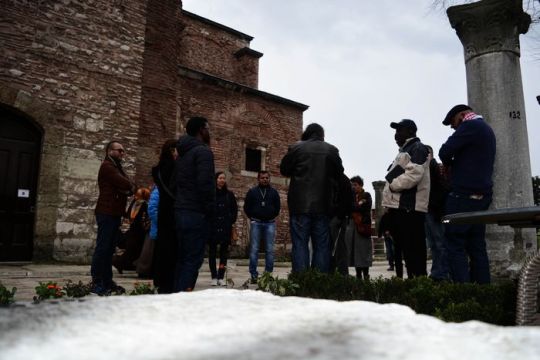
A Difficult Time in Berat
Feeling Sick and In Pain
I had a fever for a couple of days, and I only started to feel better after I went up into the hills in pain, hoping it would help. Because of this, my memories of Berat are not as pleasant as I would like them to be. I had bad sleeping conditions and mainly ate quinine to help with the fever. If I had been feeling better, I would have left the first morning, but I was so weak, and I couldn’t find anyone to guide me through the mountains to Koritza, which was to the east.
Trying to Find a Way to Koritza
I had maps from Austria that showed a route, but when I asked the Governor of Berat about it, he didn’t know of any path. I told him I was heading back to Monastir, but I couldn’t explain that I wanted to go by land. The Governor kept suggesting that I should go to the coast, to Yalona, for example, where I could catch a boat to Salonika and then take a train to Monastir. It seemed like an easy and comfortable journey compared to crossing the mountains, which he said no one had ever done before Istanbul Day Tours.
Speaking to Muleteers
I tried talking to muleteers, but it wasn’t easy. I had to communicate through two people: my dragoman who spoke Turkish, and the captain of the guard, who spoke both Turkish and Albanian. The muleteers only spoke Albanian, so a lot of information was lost in translation. The captain didn’t want to go and kept saying that there were no villages, no food, and the mountain paths would be too dangerous for the horses, especially in the rain.
Abandoning My Plan
Because of all this, I had to give up my plan to cross the mountains to Koritza in the way I wanted. I thought I could have made the journey in three days, even with the tough terrain.
A Surprising Discovery
A week later, when I reached Koritza using a different route, everyone there told me that the journey between Koritza and Berat was common, and that although it took muleteers three days, anyone traveling fast could easily do it in two! This kind of difference in information is what makes it so hard to understand the thinking of people from the East.
0 notes
Photo

The Turk’s View of Christians and Society
The Turk has not, and will not, blend with the Christians. He believes the Christians are inferior, and that Allah has placed them in a position of subjection. Massacres, in his view, are helpful because they allow the Muslims to take possession of things that Christians don’t have the right to. The Turk’s sense of morality is weakened by his belief in fate (kismet) and by the low status of women in his society.
Suspicion and Fear in Turkish Society
Everyone is suspicious of each other. A sense of fear runs through the official classes. A wealthy person is afraid to show his wealth because those in power will quickly find ways to take it from him. The policy of the Turkish government is to do nothing until forced to act, and when action is taken, it is slow. The guiding principle of Turkish administration is *yavaş, yavaş* — slowly, slowly — from the beginning to the end Who we are.
Under the Eye of Britain
Drama: The British Presence It is unclear exactly where Macedonia begins or ends. But traveling from Constantinople to Salonika, you stop at a small town called Drama. Drama is known to be in Macedonia because it is home to British officers who are there to help reform the local police force (gendarmerie) and monitor the tensions between Turks and Christians.
0 notes
Photo
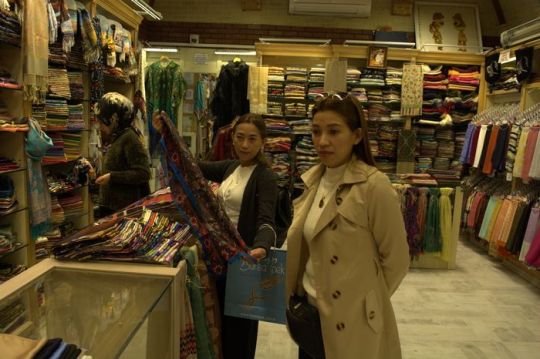
A Different Way of Enjoying Life
Drinking and Family Time
A man is less likely to drink too much if he has something that encourages him to spend time with his wife and children. The people we call “foreigners” are not more virtuous than us, but they don’t have the same drinking problems we do. This is because, in their countries, drinking is part of the public life. People drink openly, and no one judges them or thinks they are becoming bad people for doing so. I thought about this as I watched the Bulgarians relax and enjoy themselves. But I was tired from the long day, so I went to my cozy room and fell asleep, listening to the lively music of a gypsy dance.
Philippopolis: A Unique City
Philippopolis is a city with its own character. It has more personality than Sofia because, while Sofia is trying to look like other big European cities, Philippopolis has stayed true to itself and takes pride in that. The people here seem to have a superior attitude, similar to the way people in old English cathedral cities feel about newer, fast-growing towns. The city’s trade is not huge, but the people are proud of the quality of their products Customized Tours Bulgaria.
Focus on Education
One interesting place in Philippopolis is the Alexander Gymnasium, a school founded in 1885. It cost nearly £26,000 to build and spends over £5,000 every year to maintain it. The school offers free education to boys between the ages of ten and twenty-two. The only cost is a small fee: 20 francs a year for older students and 10 francs for younger ones. This money goes toward buying books and clothes for the poorest students. There is also a similar school for girls, called the Lycée, where they receive the same kind of education, except that they don’t study classics. The Bulgarians really care about education and put a lot of effort into it.
0 notes
Photo
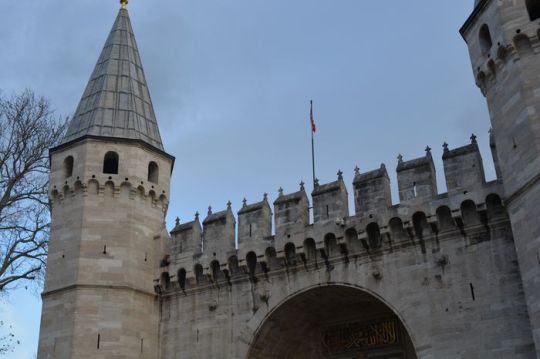
The Duty of Diplomacy A Misguided Approach
Sir Henry Elliot’s role as an ambassador should have been to advocate for the truth and defend human rights, yet he chose to defend the Turkish government unconditionally, ignoring their atrocities. His unwavering support for the Turks blinded him to the suffering of countless individuals. This was a critical failure, especially given the plethora of accurate information available from various sources.
Overlooked Reports from Consuls
Despite his bias, there were still numerous other sources of information available to him. French, German, Austrian, Greek, and Russian Consuls provided accurate weekly reports detailing the situation on the ground. These reports, which Elliot could have accessed, painted a grim picture of the ongoing atrocities. Additionally, German railway officials, who lived near the burning villages and could smell the rotting bodies, submitted their own observations. Yet, Elliot dismissed these reports, believing that they were all part of a Russian conspiracy Private Bulgaria Tours Yachting.
Dismissal of Credible Evidence
Elliot’s skepticism extended even to the reports from American missionaries. He regarded the accounts from these various diplomats and officials as worthless, dismissing them based solely on his unfounded belief that they were all in the pay of Russia. He also received a few reports from Mr. Dupuis, the Consul at Adrianople, which he deemed exaggerated for reasons he never clarified. Instead of investigating these claims further, he opted to ignore them altogether.
Misguided Assurance from the Turkish Porte
In a misguided attempt to confirm his biases, Elliot sent his dragoman to the Porte to inquire about the situation. The dragoman returned with assurances that the Turks were treating the Bulgarians with kindness, portraying them as victims rather than aggressors. Accepting this narrative without question, Elliot smiled and proclaimed, “I knew it,” choosing not to report on the brutal realities that contradicted this portrayal.
The Dangers of Exaggeration Claims
Elliot’s actions, particularly his assertion that the reports of atrocities were exaggerated, demonstrate a troubling lack of accountability. He recklessly claimed that the Bulgarians had committed atrocities equal to those of the Turks, despite having no evidence to support such a statement. By prioritizing a narrative that absolved the Turkish government, he dismissed the overwhelming evidence of suffering among the Bulgarian population.
A Call for Accountability
If Sir Henry Elliot can express indignation over alleged exaggerations while ignoring the countless victims—helpless women and innocent children whose remains litter the fields of Bulgaria—he has failed in his duty as an ambassador. Such indifference is unworthy of a representative of a Christian Queen and a generous people. It is imperative that those in positions of power prioritize truth and justice over political alliances, for the consequences of neglect can lead to unimaginable suffering.
0 notes
Photo
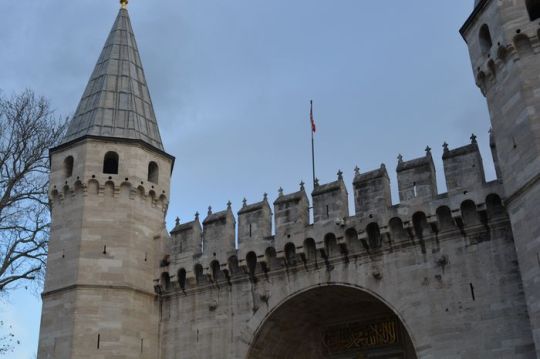
The Duty of Diplomacy A Misguided Approach
Sir Henry Elliot’s role as an ambassador should have been to advocate for the truth and defend human rights, yet he chose to defend the Turkish government unconditionally, ignoring their atrocities. His unwavering support for the Turks blinded him to the suffering of countless individuals. This was a critical failure, especially given the plethora of accurate information available from various sources.
Overlooked Reports from Consuls
Despite his bias, there were still numerous other sources of information available to him. French, German, Austrian, Greek, and Russian Consuls provided accurate weekly reports detailing the situation on the ground. These reports, which Elliot could have accessed, painted a grim picture of the ongoing atrocities. Additionally, German railway officials, who lived near the burning villages and could smell the rotting bodies, submitted their own observations. Yet, Elliot dismissed these reports, believing that they were all part of a Russian conspiracy Private Bulgaria Tours Yachting.
Dismissal of Credible Evidence
Elliot’s skepticism extended even to the reports from American missionaries. He regarded the accounts from these various diplomats and officials as worthless, dismissing them based solely on his unfounded belief that they were all in the pay of Russia. He also received a few reports from Mr. Dupuis, the Consul at Adrianople, which he deemed exaggerated for reasons he never clarified. Instead of investigating these claims further, he opted to ignore them altogether.
Misguided Assurance from the Turkish Porte
In a misguided attempt to confirm his biases, Elliot sent his dragoman to the Porte to inquire about the situation. The dragoman returned with assurances that the Turks were treating the Bulgarians with kindness, portraying them as victims rather than aggressors. Accepting this narrative without question, Elliot smiled and proclaimed, “I knew it,” choosing not to report on the brutal realities that contradicted this portrayal.
The Dangers of Exaggeration Claims
Elliot’s actions, particularly his assertion that the reports of atrocities were exaggerated, demonstrate a troubling lack of accountability. He recklessly claimed that the Bulgarians had committed atrocities equal to those of the Turks, despite having no evidence to support such a statement. By prioritizing a narrative that absolved the Turkish government, he dismissed the overwhelming evidence of suffering among the Bulgarian population.
A Call for Accountability
If Sir Henry Elliot can express indignation over alleged exaggerations while ignoring the countless victims—helpless women and innocent children whose remains litter the fields of Bulgaria—he has failed in his duty as an ambassador. Such indifference is unworthy of a representative of a Christian Queen and a generous people. It is imperative that those in positions of power prioritize truth and justice over political alliances, for the consequences of neglect can lead to unimaginable suffering.
0 notes
Photo
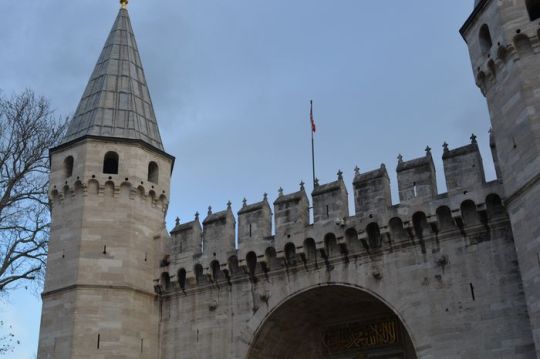
The Duty of Diplomacy A Misguided Approach
Sir Henry Elliot’s role as an ambassador should have been to advocate for the truth and defend human rights, yet he chose to defend the Turkish government unconditionally, ignoring their atrocities. His unwavering support for the Turks blinded him to the suffering of countless individuals. This was a critical failure, especially given the plethora of accurate information available from various sources.
Overlooked Reports from Consuls
Despite his bias, there were still numerous other sources of information available to him. French, German, Austrian, Greek, and Russian Consuls provided accurate weekly reports detailing the situation on the ground. These reports, which Elliot could have accessed, painted a grim picture of the ongoing atrocities. Additionally, German railway officials, who lived near the burning villages and could smell the rotting bodies, submitted their own observations. Yet, Elliot dismissed these reports, believing that they were all part of a Russian conspiracy Private Bulgaria Tours Yachting.
Dismissal of Credible Evidence
Elliot’s skepticism extended even to the reports from American missionaries. He regarded the accounts from these various diplomats and officials as worthless, dismissing them based solely on his unfounded belief that they were all in the pay of Russia. He also received a few reports from Mr. Dupuis, the Consul at Adrianople, which he deemed exaggerated for reasons he never clarified. Instead of investigating these claims further, he opted to ignore them altogether.
Misguided Assurance from the Turkish Porte
In a misguided attempt to confirm his biases, Elliot sent his dragoman to the Porte to inquire about the situation. The dragoman returned with assurances that the Turks were treating the Bulgarians with kindness, portraying them as victims rather than aggressors. Accepting this narrative without question, Elliot smiled and proclaimed, “I knew it,” choosing not to report on the brutal realities that contradicted this portrayal.
The Dangers of Exaggeration Claims
Elliot’s actions, particularly his assertion that the reports of atrocities were exaggerated, demonstrate a troubling lack of accountability. He recklessly claimed that the Bulgarians had committed atrocities equal to those of the Turks, despite having no evidence to support such a statement. By prioritizing a narrative that absolved the Turkish government, he dismissed the overwhelming evidence of suffering among the Bulgarian population.
A Call for Accountability
If Sir Henry Elliot can express indignation over alleged exaggerations while ignoring the countless victims—helpless women and innocent children whose remains litter the fields of Bulgaria—he has failed in his duty as an ambassador. Such indifference is unworthy of a representative of a Christian Queen and a generous people. It is imperative that those in positions of power prioritize truth and justice over political alliances, for the consequences of neglect can lead to unimaginable suffering.
0 notes
Photo
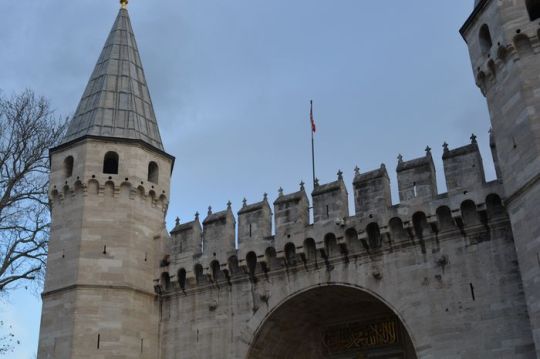
The Duty of Diplomacy A Misguided Approach
Sir Henry Elliot’s role as an ambassador should have been to advocate for the truth and defend human rights, yet he chose to defend the Turkish government unconditionally, ignoring their atrocities. His unwavering support for the Turks blinded him to the suffering of countless individuals. This was a critical failure, especially given the plethora of accurate information available from various sources.
Overlooked Reports from Consuls
Despite his bias, there were still numerous other sources of information available to him. French, German, Austrian, Greek, and Russian Consuls provided accurate weekly reports detailing the situation on the ground. These reports, which Elliot could have accessed, painted a grim picture of the ongoing atrocities. Additionally, German railway officials, who lived near the burning villages and could smell the rotting bodies, submitted their own observations. Yet, Elliot dismissed these reports, believing that they were all part of a Russian conspiracy Private Bulgaria Tours Yachting.
Dismissal of Credible Evidence
Elliot’s skepticism extended even to the reports from American missionaries. He regarded the accounts from these various diplomats and officials as worthless, dismissing them based solely on his unfounded belief that they were all in the pay of Russia. He also received a few reports from Mr. Dupuis, the Consul at Adrianople, which he deemed exaggerated for reasons he never clarified. Instead of investigating these claims further, he opted to ignore them altogether.
Misguided Assurance from the Turkish Porte
In a misguided attempt to confirm his biases, Elliot sent his dragoman to the Porte to inquire about the situation. The dragoman returned with assurances that the Turks were treating the Bulgarians with kindness, portraying them as victims rather than aggressors. Accepting this narrative without question, Elliot smiled and proclaimed, “I knew it,” choosing not to report on the brutal realities that contradicted this portrayal.
The Dangers of Exaggeration Claims
Elliot’s actions, particularly his assertion that the reports of atrocities were exaggerated, demonstrate a troubling lack of accountability. He recklessly claimed that the Bulgarians had committed atrocities equal to those of the Turks, despite having no evidence to support such a statement. By prioritizing a narrative that absolved the Turkish government, he dismissed the overwhelming evidence of suffering among the Bulgarian population.
A Call for Accountability
If Sir Henry Elliot can express indignation over alleged exaggerations while ignoring the countless victims—helpless women and innocent children whose remains litter the fields of Bulgaria—he has failed in his duty as an ambassador. Such indifference is unworthy of a representative of a Christian Queen and a generous people. It is imperative that those in positions of power prioritize truth and justice over political alliances, for the consequences of neglect can lead to unimaginable suffering.
0 notes
Photo
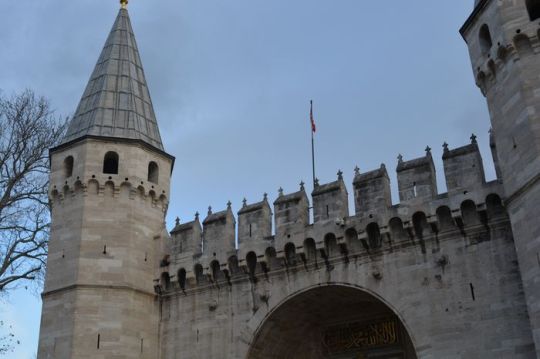
The Duty of Diplomacy A Misguided Approach
Sir Henry Elliot’s role as an ambassador should have been to advocate for the truth and defend human rights, yet he chose to defend the Turkish government unconditionally, ignoring their atrocities. His unwavering support for the Turks blinded him to the suffering of countless individuals. This was a critical failure, especially given the plethora of accurate information available from various sources.
Overlooked Reports from Consuls
Despite his bias, there were still numerous other sources of information available to him. French, German, Austrian, Greek, and Russian Consuls provided accurate weekly reports detailing the situation on the ground. These reports, which Elliot could have accessed, painted a grim picture of the ongoing atrocities. Additionally, German railway officials, who lived near the burning villages and could smell the rotting bodies, submitted their own observations. Yet, Elliot dismissed these reports, believing that they were all part of a Russian conspiracy Private Bulgaria Tours Yachting.
Dismissal of Credible Evidence
Elliot’s skepticism extended even to the reports from American missionaries. He regarded the accounts from these various diplomats and officials as worthless, dismissing them based solely on his unfounded belief that they were all in the pay of Russia. He also received a few reports from Mr. Dupuis, the Consul at Adrianople, which he deemed exaggerated for reasons he never clarified. Instead of investigating these claims further, he opted to ignore them altogether.
Misguided Assurance from the Turkish Porte
In a misguided attempt to confirm his biases, Elliot sent his dragoman to the Porte to inquire about the situation. The dragoman returned with assurances that the Turks were treating the Bulgarians with kindness, portraying them as victims rather than aggressors. Accepting this narrative without question, Elliot smiled and proclaimed, “I knew it,” choosing not to report on the brutal realities that contradicted this portrayal.
The Dangers of Exaggeration Claims
Elliot’s actions, particularly his assertion that the reports of atrocities were exaggerated, demonstrate a troubling lack of accountability. He recklessly claimed that the Bulgarians had committed atrocities equal to those of the Turks, despite having no evidence to support such a statement. By prioritizing a narrative that absolved the Turkish government, he dismissed the overwhelming evidence of suffering among the Bulgarian population.
A Call for Accountability
If Sir Henry Elliot can express indignation over alleged exaggerations while ignoring the countless victims—helpless women and innocent children whose remains litter the fields of Bulgaria—he has failed in his duty as an ambassador. Such indifference is unworthy of a representative of a Christian Queen and a generous people. It is imperative that those in positions of power prioritize truth and justice over political alliances, for the consequences of neglect can lead to unimaginable suffering.
0 notes
Photo
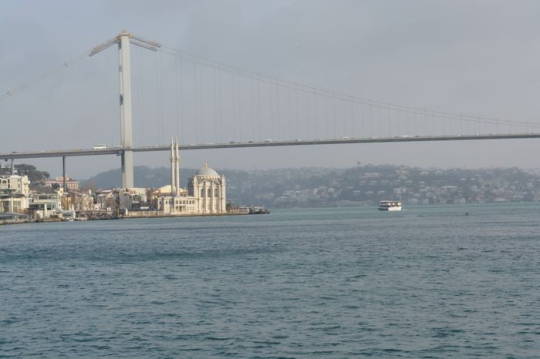
Sovietization of Bulgaria
On 4 December 1947, Bulgaria’s Grand National Assembly, where the Bulgarian Communist Party held an absolute majority, adopted the “Constitution of the People’s Republic of Bulgaria.” This new constitution significantly altered the country’s government model. It replaced the traditional separation of powers with a system that concentrated all state power under the control of the Communist Party.
International Criticism
The new constitution closely mirrored Stalin’s Soviet Constitution. It allowed for arbitrary power and ignored individual rights and freedoms, despite the existing peace treaties. According to the Gazette du Lausanne daily from Lausanne on 27 December 1947, “The new Bulgarian Constitution is an almost exact copy of Stalin’s Constitution… Some provisions open the way to arbitrary power and to disregard of people’s rights and freedoms despite the conditions of the peace treaties Istanbul Day Tour.”
Repressive Measures and Economic Changes
The Communist Party used the judicial system as a tool to impose its dictatorship. They introduced repressive laws targeting political opponents and adversaries. People were subjected to sham political trials that often ended in death sentences or prison terms. Many were detained in labor camps or forcibly resettled. The principle of “all property belongs to the people” was declared the foundation of the national economy. Under this principle, the government moved to eliminate private ownership of industrial enterprises, means of production, and farmland.
Imposition of the Soviet Model
The Soviet model was enforced across all aspects of Bulgarian life, including administration, military, economy, and culture. Soviet themes became mandatory in all forms of art. Bulgarian bookstores were filled exclusively with works by Lenin, Stalin, Marx, and other Soviet-related literature. Portraits of Stalin and Molotov were displayed alongside those of Bulgarian Communist leader Georgi Dimitrov. Additionally, young members of certain organizations were seen studying the Soviet national anthem, which had been adopted as Bulgaria’s “second national anthem.”
Media Coverage
According to the Athens daily “To Vima” (The Tribune) on 8 April 1947, “All Bulgarian bookstores are crammed with and offer nothing else but the works of Lenin, Stalin, Marx, Russian books, and books about the Soviet Union. Stalin and Molotov’s portraits are everywhere, hanging next to those of the Bulgarian Communist leader Georgi Dimitrov… Young members of some organizations are sitting in a hall studying the Soviet national anthem, which is now Bulgaria’s second national anthem.”
In summary, the Sovietization of Bulgaria involved the imposition of a Soviet-style constitution, a repressive legal system, the elimination of private property, and the enforcement of Soviet cultural and political norms.
0 notes
Photo
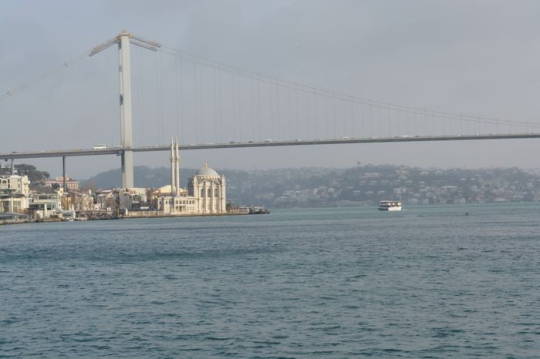
Sovietization of Bulgaria
On 4 December 1947, Bulgaria’s Grand National Assembly, where the Bulgarian Communist Party held an absolute majority, adopted the “Constitution of the People’s Republic of Bulgaria.” This new constitution significantly altered the country’s government model. It replaced the traditional separation of powers with a system that concentrated all state power under the control of the Communist Party.
International Criticism
The new constitution closely mirrored Stalin’s Soviet Constitution. It allowed for arbitrary power and ignored individual rights and freedoms, despite the existing peace treaties. According to the Gazette du Lausanne daily from Lausanne on 27 December 1947, “The new Bulgarian Constitution is an almost exact copy of Stalin’s Constitution… Some provisions open the way to arbitrary power and to disregard of people’s rights and freedoms despite the conditions of the peace treaties Istanbul Day Tour.”
Repressive Measures and Economic Changes
The Communist Party used the judicial system as a tool to impose its dictatorship. They introduced repressive laws targeting political opponents and adversaries. People were subjected to sham political trials that often ended in death sentences or prison terms. Many were detained in labor camps or forcibly resettled. The principle of “all property belongs to the people” was declared the foundation of the national economy. Under this principle, the government moved to eliminate private ownership of industrial enterprises, means of production, and farmland.
Imposition of the Soviet Model
The Soviet model was enforced across all aspects of Bulgarian life, including administration, military, economy, and culture. Soviet themes became mandatory in all forms of art. Bulgarian bookstores were filled exclusively with works by Lenin, Stalin, Marx, and other Soviet-related literature. Portraits of Stalin and Molotov were displayed alongside those of Bulgarian Communist leader Georgi Dimitrov. Additionally, young members of certain organizations were seen studying the Soviet national anthem, which had been adopted as Bulgaria’s “second national anthem.”
Media Coverage
According to the Athens daily “To Vima” (The Tribune) on 8 April 1947, “All Bulgarian bookstores are crammed with and offer nothing else but the works of Lenin, Stalin, Marx, Russian books, and books about the Soviet Union. Stalin and Molotov’s portraits are everywhere, hanging next to those of the Bulgarian Communist leader Georgi Dimitrov… Young members of some organizations are sitting in a hall studying the Soviet national anthem, which is now Bulgaria’s second national anthem.”
In summary, the Sovietization of Bulgaria involved the imposition of a Soviet-style constitution, a repressive legal system, the elimination of private property, and the enforcement of Soviet cultural and political norms.
0 notes
Photo
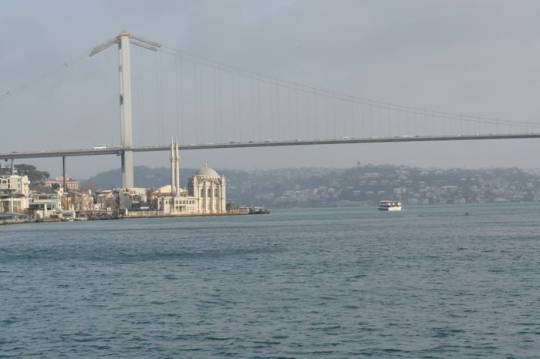
Sovietization of Bulgaria
On 4 December 1947, Bulgaria’s Grand National Assembly, where the Bulgarian Communist Party held an absolute majority, adopted the “Constitution of the People’s Republic of Bulgaria.” This new constitution significantly altered the country’s government model. It replaced the traditional separation of powers with a system that concentrated all state power under the control of the Communist Party.
International Criticism
The new constitution closely mirrored Stalin’s Soviet Constitution. It allowed for arbitrary power and ignored individual rights and freedoms, despite the existing peace treaties. According to the Gazette du Lausanne daily from Lausanne on 27 December 1947, “The new Bulgarian Constitution is an almost exact copy of Stalin’s Constitution… Some provisions open the way to arbitrary power and to disregard of people’s rights and freedoms despite the conditions of the peace treaties Istanbul Day Tour.”
Repressive Measures and Economic Changes
The Communist Party used the judicial system as a tool to impose its dictatorship. They introduced repressive laws targeting political opponents and adversaries. People were subjected to sham political trials that often ended in death sentences or prison terms. Many were detained in labor camps or forcibly resettled. The principle of “all property belongs to the people” was declared the foundation of the national economy. Under this principle, the government moved to eliminate private ownership of industrial enterprises, means of production, and farmland.
Imposition of the Soviet Model
The Soviet model was enforced across all aspects of Bulgarian life, including administration, military, economy, and culture. Soviet themes became mandatory in all forms of art. Bulgarian bookstores were filled exclusively with works by Lenin, Stalin, Marx, and other Soviet-related literature. Portraits of Stalin and Molotov were displayed alongside those of Bulgarian Communist leader Georgi Dimitrov. Additionally, young members of certain organizations were seen studying the Soviet national anthem, which had been adopted as Bulgaria’s “second national anthem.”
Media Coverage
According to the Athens daily “To Vima” (The Tribune) on 8 April 1947, “All Bulgarian bookstores are crammed with and offer nothing else but the works of Lenin, Stalin, Marx, Russian books, and books about the Soviet Union. Stalin and Molotov’s portraits are everywhere, hanging next to those of the Bulgarian Communist leader Georgi Dimitrov… Young members of some organizations are sitting in a hall studying the Soviet national anthem, which is now Bulgaria’s second national anthem.”
In summary, the Sovietization of Bulgaria involved the imposition of a Soviet-style constitution, a repressive legal system, the elimination of private property, and the enforcement of Soviet cultural and political norms.
0 notes
Photo
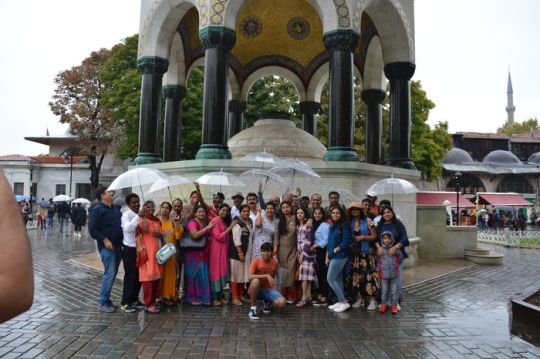
Life in Belgrade A Blend of Tradition and Modernity
Traditional Peasant Attire
In the streets of Belgrade, you’ll encounter peasants dressed in traditional garb, reflecting the region’s rich cultural heritage. Their legs are covered in rough, homemade stockings, often adorned with a red band, while their feet are clad in simple sandals secured with straps across the instep and around the ankle. Peasant women, with plain features and a tendency towards plumpness, wear short petticoats and colorful headscarves.
Vibrant Market Scenes
Market days are bustling affairs, with Belgrade housewives taking charge of their own shopping. As they haggle over prices, a variety of characters roam the crowd. A wandering vendor sings his sales pitch for sweet drinks, while priests of the Servian Church, distinguished by their long black hair, whiskers, and flowing black robes, receive respectful greetings. A policeman, resembling a soldier with a horse pistol at his belt, marches through, followed by an official beating a kettledrum to announce proclamations Private Tours Bulgaria.
Military Presence
Along the dusty country roads, the sound of bugles heralds the arrival of young soldiers marching with a determined stride. Their attire, though worn and dusty, speaks of their dedication to duty. Dark blue forage caps and breeches bear the marks of their journey, while clover or ears of wheat adorn their caps as symbols of luck and abundance. Leading the detachment, the officer, mounted on a fine horse, embodies precision and order amidst the rustic surroundings.
0 notes